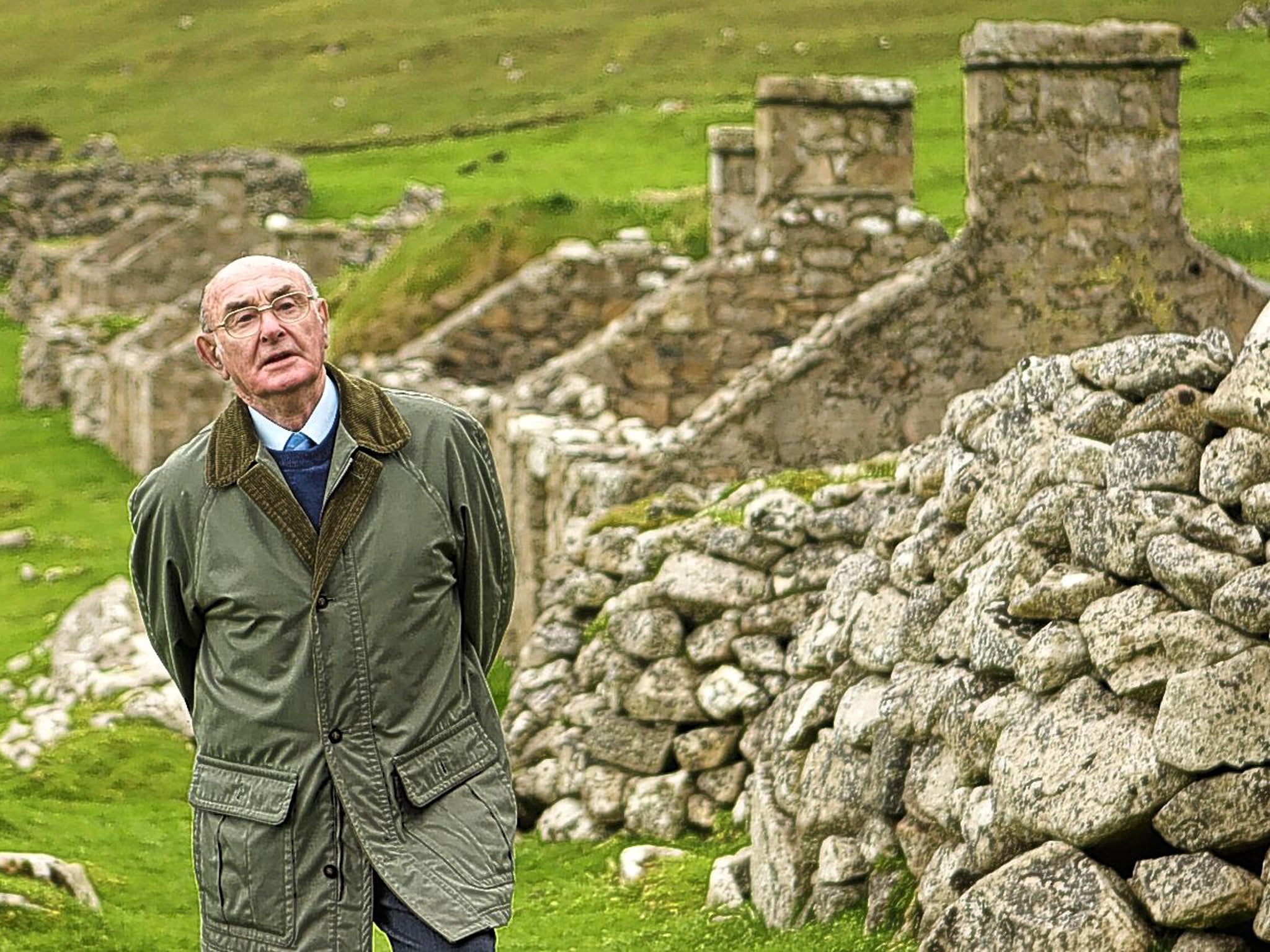Norman John Gillies: St Kilda evacuee who dedicated himself to preserving its memory

The death of Norman John Gillies at the age of 88 has severed a link to an ancient and hardy group of people who for more than 1,000 years inhabited Britain's most remote group of islands. On 29 August 1930 the last 36 inhabitants of St Kilda, far out to sea in the North Atlantic, were evacuated to the mainland of Scotland. Norman John was only five years old, but he never forgot being rowed out to the ship that was to take the St Kildans to the West Coast and a very different life. One of only two remaining native born survivors, he was keen to ensure that the story of the remote community lived on.
"I remember how the older women, including my grandmother stood at the boat's stern," he told me recently when I updated my late husband's book Life and Death of St Kilda. "Their shawls were wrapped around them, waving at the islands as they disappeared from sight."
The St Kildans voted to leave the islands after the death of Gillies' mother, bringing to an end a tightly knit community which had lived there for possibly 2,000 years. The barren islands were cut off from the mainland for nine months of the year by rough seas and winds; his ill mother waited for two weeks for a boat to take her to a hospital in Glasgow. There she died of appendicitis after giving birth to a little girl who also died. Gillies' last memory of his mother was standing with his grandmother watching her being rowed out by the lighthouse ship.
St Kilda, and its central island of Hirta, is the UK's only Unesco Dual World Heritage site. It was home to a group of simple people, mostly named Gillies or MacKinnon, speaking Gaelic and grounded in "The Free Church". They lived by climbing down the rocks to kill the sea birds on the cliffs, living on their meat and using them for oil, and by farming tough sheep and cattle kept on other islands to which they rowed. They weaved and sold their tweeds to tourists who visited the islands, using the money to stock up on supplies. They ran their own affairs, holding a "parliament" in their main street, making sure that the dead seabirds were shared out among the population. A series of disasters, along with the poverty of the 1920s, led to the population gradually declining as the young left.
Gillies' father John was determined that his son would have a better life. "If he hadn't made that decision I would have lived a very hard life," Gillies told me. "Instead I had opportunities others never had."
But the removal to Scotland was no panacea. The community was regarded with curiosity; there were rumours of misshapen feet and some disdain for their simplicity. Gillies remembered people waiting at the pier for their arrival: "I can still recall the crowds, you have never seen so many people; they were probably expecting to see some strange inhabitants arriving."
The population was split up among villages on the north-west coast; the men, who had never seen trees, were given jobs working in the forests. With little money and without help to adapt to their new lives, they struggled to survive. The first croft that Norman moved into, with his father John and grandmother, was damp and miles away from the local school. John put his foot down, as conditions were worse than on St Kilda. His son should be brought up in a healthy climate and be properly schooled, he believed. They moved to another village only a mile away from the school. Many of the youngsters, some living in unhealthy conditions, died from illnesses such as TB. The elderly, it was claimed, died of loneliness.
Norman Gillies left school when he was 14 to work as an apprentice with the Forestry Commission. In 1943, aged 18, he joined the Royal Navy, serving on motor torpedo boats based at Felixstowe patrolling the Channel. He also served at signal stations in Egypt. Demobilised in September 1945, he settled in Suffolk. He married Ivy in 1948, becoming manager of a builders' merchant, playing a major part in his local Methodist church and living in a house called "St Kilda".
He became a frequent contributor to programmes or articles on the islands. Always smartly dressed, remaining neat even when stepping on to the shores of Hirta from some much-buffeted boat, he would make several return visits to his birthplace. In 1976 he took part in a National Trust of Scotland working party repairing crofts. In August 2005 the whole family visited St Kilda. "St Kilda was very important to him," his son John told me. "He was a great Ambassador for the islands; he hoped many generations would visit. He loved telling people stories about St Kilda. I treasure the times we spent together there."
I remember a kind, gracious man, full of enthusiasm for his birthplace. Asked what he wanted to happen to St Kilda, his answer was simple. "It's a beautiful island. I want St Kilda to be looked after and cared for."
Norman John Gillies, survivor of St Kilda: born Hirta, St Kilda 22 May 1925; married 1948 Ivy Knights (one son, two daughters); died Ipswich 29 September 2013.
Join our commenting forum
Join thought-provoking conversations, follow other Independent readers and see their replies
Comments
Bookmark popover
Removed from bookmarks